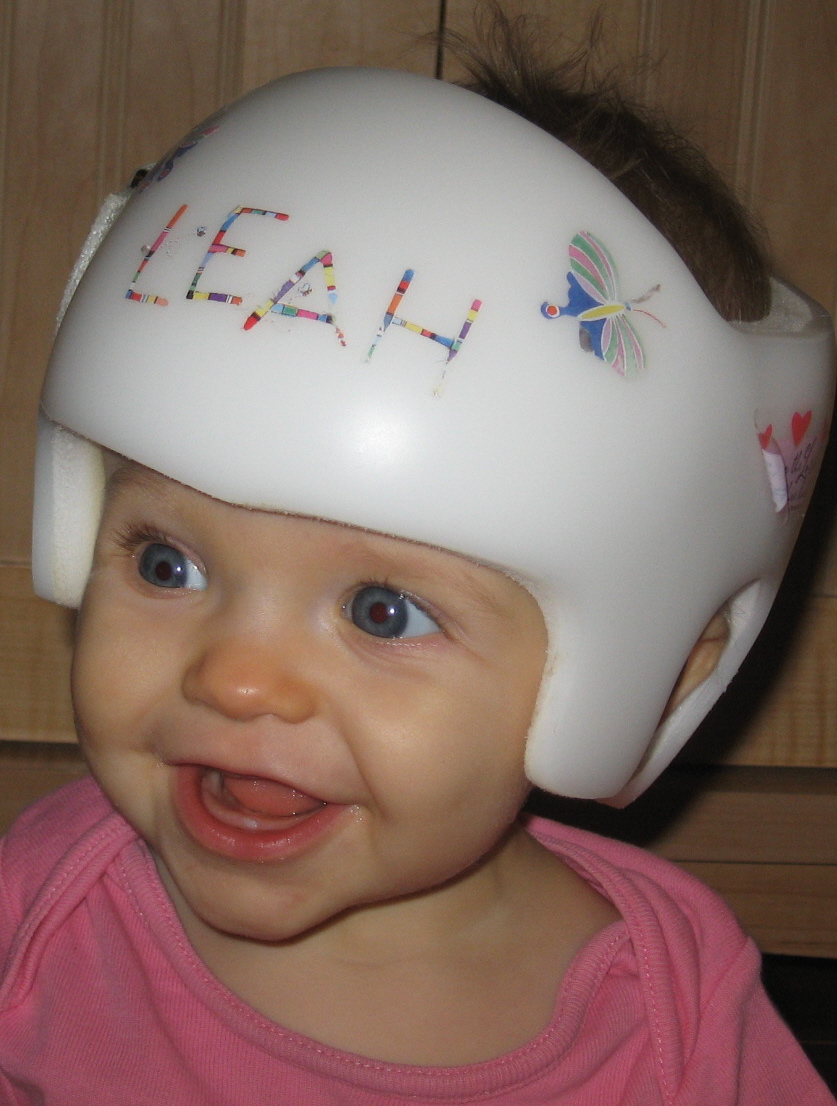The suture down the middle of the forehead is called the Metopic suture. When it is fused together the forehead will have a prominent ridge down the middle and the head will look triangular from above. Hers is open.

From the top view you can see how misshapen her head is and the bulge on her forehead. The suture on top of the skull is the saggital. Hers is open but the saggital suture is the most common to be fused.
Her right coronal suture is closed as you can see below.
Her left coronal suture is open as you can see below.
.jpg) Some babies have multiple sutures that are closed which can cause intra-cranial pressure (ICP) and affect their brain development. It is rare for this to happen in single suture cases but can be a possibility.
Some babies have multiple sutures that are closed which can cause intra-cranial pressure (ICP) and affect their brain development. It is rare for this to happen in single suture cases but can be a possibility.
When a suture is closed it affects the direction the brain will grow and causes the head to be misshapen or deformed. The sutures are supposed to close at later dates as we get older, some in childhood and some don't even close until adulthood.
We found Leah's scans fascinating and though we wish we weren't in this situation at all, we have found we are quickly becoming experts on craniosynostosis. Surprisingly we have found through meeting other parents online that a lot of pediatricians don't know much about craniosynostosis and many moms have had to push to get referrals to get their baby's head checked out.
Craniosynostosis affects 1 in 2,000 babies and though that seems rare to me I have found through the online community that it is quite common. The only way to "fix" cranio is through surgery. Unless it is a type of cranio that is associated with a syndrome (Leah's is not), craniosynostosis happens sporadically with no known cause and is not genetic.
Will post soon about Leah's upcoming surgery and her visit with the neurosurgeon on March 10th.


.jpg)


1 comment:
I was wondering if you could tell me what her head felt like before surgery. Was one side smooth and the other rigid? Please let me know.
Post a Comment